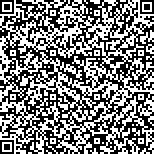本文已被:浏览 825次 下载 803次
投稿时间:2017-12-21 网络发布日期:2018-06-21
投稿时间:2017-12-21 网络发布日期:2018-06-21
中文摘要: 目的 探讨输尿管软镜碎石术后尿脓毒血症的危险因素。方法 回顾性分析于2016年7月至2017年12月收治入院的251例输尿管软镜碎石术患者,其中尿脓毒血症12例,发生率4.8%,未发生尿脓毒血症239例。对患者的年龄、BMI、性别、糖尿病、肾脏解剖畸形、慢性肾功能不全、术前留置双J管、近期因结石发热病史、双侧手术、手术时间、术中感染迹象等资料进行调查统计,并采用单因素及多因素分析影响输尿管软镜碎石术后尿脓毒血症的危险因素。结果 单因素分析显示,两组人群在年龄、BMI、性别、糖尿病、术前留置双J管、手术时间等方面对比,差异无统计学意义(P>0.05);但尿脓毒血症组在肾脏解剖畸形、慢性肾功能不全、近期因结石发热病史、双侧手术、术中感染迹象等发生率均高于未发生组,差异有统计学意义(P<0.05,P<0.01)。多因素分析显示,术前未放置双J管(P=0.02) 、近期因结石发热病史(P=0.00) 及术中感染迹象(P=0.00)均为尿脓毒血症发生的独立危险因素。结论 输尿管软镜碎石术后尿脓毒血症发生的危险因素分析包括术前未放置双 J 管、近期因结石发热病史及术中感染迹象等。
中文关键词: 输尿管软镜碎石术 尿脓毒血症 危险因素 感染;双J管;结石发热
Abstract:Objective To investigate the risk factors of urosepsis after ureteroscopic lithotripsy. Methods A total of 251 patients who received ureteroscopic lithotripsy from July 2016 to December 2017 were retrospectively analyzed. According to the occurrence of urosepsis, the patients were divided into urosepsis group (n=12, 4. 8%) and no urosepsis group (n=239). The patients′ age, BMI, gender, diabetes, anatomic malformation, chronic renal insufficiency, preoperative double J stent, recent history of lithiasis fever, bilateral surgery, operation time, and signs of infection were investigated, single and multiple factor analysis were used to analyze the risk factors of urosepsis after ureteroscopic lithotripsy. Results Single factor analysis showed that there was no significant difference between the two groups in age, BMI, gender, diabetes, preoperative double-J stent retention and operation time (all P>0.05). However, the incidence rate of renal anatomical malformation, chronic renal insufficiency, the recent history of lithiasis fever, bilateral operation and infection in the urosepsis group were significant higher than those in the no urosepsis group (P<0.05, P<0.01). Multiple factor analysis showed that the preoperative absence of double-J tube (P=0. 02), recent history of lithiasis fever (P=0. 00) and indications of intraoperative infection (P=0. 00) were independent risk factors for the occurrence of urosepsis. Conclusion The risk factors for the occurrence of urosepsis after ureteroscopic lithotripsy include the preoperative absence of double-J stent, the recent history of lithiasis fever and the signs of intraoperative infection.
文章编号: 中图分类号:R 619+.3 R 693+.4 文献标志码:A
基金项目:重庆市卫生计生委2015年医学科研计划项目(2015MSXM189)
| 作者 | 单位 |
| 李锋1 | 1.梁平区人民医院泌尿外科,重庆 405200 |
| 左其明1 | 1.梁平区人民医院泌尿外科,重庆 405200 |
| 张佼1 | 1.梁平区人民医院泌尿外科,重庆 405200 |
| 张玉玲2 | 2.梁平区人民医院神经内科,重庆 405200 |
| 熊涛3 | 3.荣昌区人民医院泌尿外科,重庆 405100 |
| Author Name | Affiliation |
| LI Feng*, ZUO Qi-ming, ZHANG Jiao, ZHANG Yu-ling, XIONG Tao | *Department of Urology Surgery, Liangping District People′s Hospital, Chongqing 405200, China |
引用文本:
李锋,左其明,张佼,等.输尿管软镜碎石术后尿脓毒血症的临床调查[J].中国临床研究,2018,31(6):775-777.
李锋,左其明,张佼,等.输尿管软镜碎石术后尿脓毒血症的临床调查[J].中国临床研究,2018,31(6):775-777.
